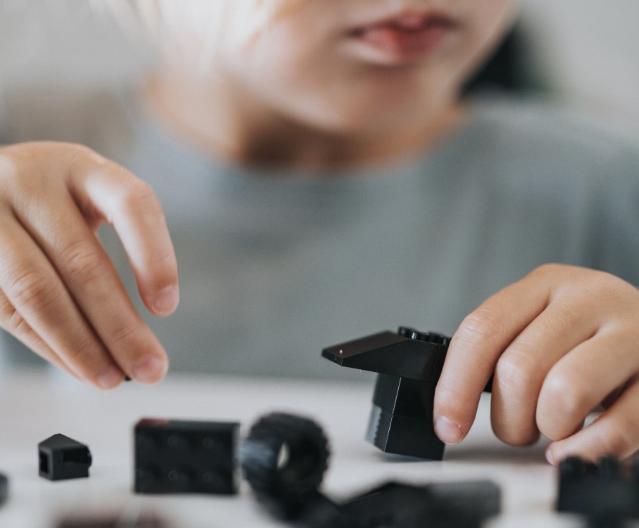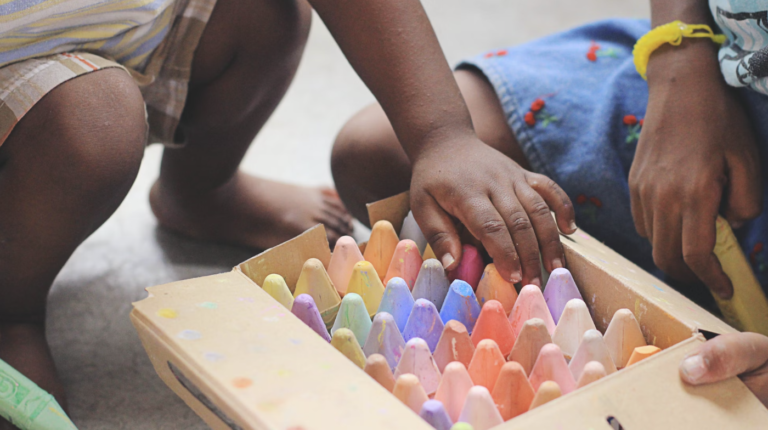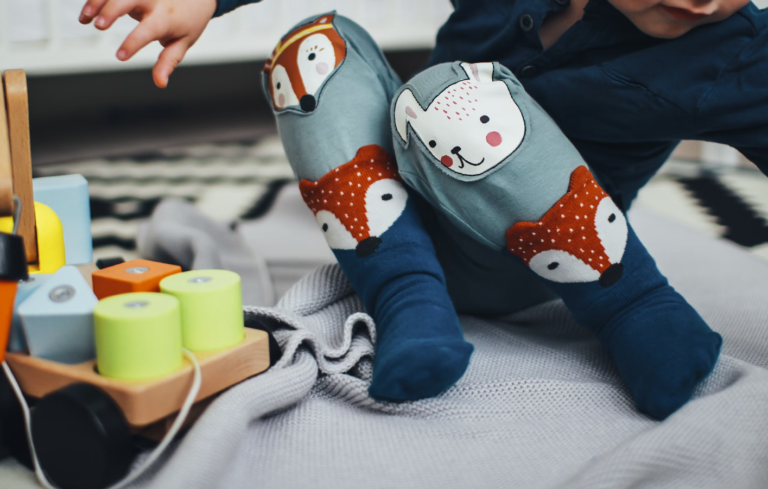If you have a child with ADHD, you know how important it is to find activities and companions that can help them channel their energy in a positive way. One option that you may not have considered is getting a pet. Pets can provide a range of benefits for children with ADHD, including companionship, responsibility, and a calming influence. In this article, we will explore the best pets for ADHD children and how they can make a difference in their lives.
When it comes to choosing the right pet for your ADHD child, it’s important to consider their unique needs and preferences. Some pets, like dogs, require a lot of physical activity and can help your child burn off excess energy. Other pets, like cats or small rodents, can provide a calming presence and help your child relax. We will discuss the pros and cons of different types of pets, as well as important factors to consider before bringing a pet into your home. So, if you’re ready to find the perfect furry friend for your ADHD child, keep reading to discover the best pets for them.
Key Takeaways
- Pets, such as dogs, cats, fish, small rodents, and birds, provide numerous benefits for children with ADHD.
- The benefits of pets for children with ADHD include companionship, reduced stress and anxiety, increased physical
Benefits of pets for children with ADHD
Having a pet can offer numerous benefits for children with ADHD. Not only do pets provide companionship, but they can also offer a sense of responsibility and a calming influence. Here are some key benefits to consider:
Companionship and Emotional Support
Pets can be loyal and loving companions for children with ADHD. They offer unconditional love and acceptance, which can help boost a child’s self-esteem and sense of belonging. Having a pet by their side can provide a comforting and supportive presence, especially during challenging times.
Reduced Stress and Anxiety
Research has shown that spending time with pets can reduce stress and anxiety levels. This is particularly beneficial for children with ADHD who may experience high levels of restlessness and impulsivity. Pets, such as dogs or cats, can provide a soothing and calming presence, helping to lower stress levels and promote relaxation.
Increased Physical Activity
Children with ADHD often have a surplus of energy that needs to be channeled effectively. Interacting with pets can help burn off excess energy and engage in physical activity. For instance, taking the dog for a walk or playing fetch can provide an outlet for the child’s energy, promoting healthy exercise habits and reducing hyperactivity.
Improved Focus and Attention
Pets can also help children with ADHD improve their focus and attention spans. Engaging in activities with pets, such as training sessions or games, requires concentration and focus. This can translate into improved attention skills that can benefit the child both in their daily life and academic endeavors.
Boost in Self-Esteem and Confidence
Having a pet can help boost a child’s self-esteem and confidence. Caring for a pet and witnessing their growth and happiness can give children a sense of accomplishment and pride. They can take on responsibility by feeding, grooming, and training their pet, which can instill a sense of capability and competence.
In conclusion,
Pets provide invaluable benefits for children with ADHD, including companionship, reduced stress, increased physical activity, improved focus, and a boost in self-esteem. These advantages can significantly contribute to a child’s overall well-being and help them navigate their ADHD symptoms more effectively. Consider the unique needs and preferences of your child when choosing a pet, ensuring that it aligns with their energy level and personality.
Considerations for choosing the right pet
When it comes to choosing the right pet for your child with ADHD, there are several factors you need to consider. Each child is unique, and their needs and preferences should play a significant role in the decision-making process. Keep in mind the following considerations to ensure that you find the best possible pet for your child:
- Energy Level: Consider your child’s energy level and how it aligns with the pet you’re considering. Some children with ADHD have high energy levels and may benefit from a pet that can keep up with their active lifestyle, such as a dog. On the other hand, if your child prefers a more calm and relaxed environment, a cat or a small rodent may be a better fit.
- Allergies: Check if your child has any allergies to certain types of animals or their dander. It’s essential to choose a pet that doesn’t trigger any allergic reactions. Consult with your pediatrician or an allergy specialist if you’re unsure about which pets are suitable for your child.
- Size and Space: Consider the size of your living space and whether it can accommodate the pet you have in mind. Larger animals may require more room to roam and play, while smaller pets can thrive in smaller spaces. Ensure that you have enough space to meet the needs of the pet you choose.
- Responsibility: Assess your child’s willingness and ability to take on the responsibility of caring for a pet. While having a pet can teach children with ADHD important life skills like responsibility and empathy, it’s crucial to select a pet that matches your child’s current capabilities. Start with a pet that requires less responsibility, such as a fish or a hamster, before considering more demanding pets like dogs or cats.
Remember, patience and understanding are key when introducing a new pet into your child’s life. It may take time for your child to adjust to the new responsibility, and the pet may also need time to acclimate to its new environment. By choosing the right pet and providing a supportive environment, you can enhance your child’s well-being and help them thrive with their ADHD symptoms.
Consider these factors when selecting a pet to ensure a positive and beneficial experience for both your child and the new furry family member.
Best pets for children with ADHD
When it comes to choosing a pet for a child with ADHD, there are several factors to consider. Not all pets are suitable for every child, so it’s important to find the right match based on their individual needs and preferences. Here are some of the best pets for children with ADHD:
Dogs – Man’s Best Friend
Dogs are known for their loyalty and companionship, making them excellent pets for children with ADHD. They provide constant love and attention, which can help to reduce stress and anxiety. Dogs also require regular exercise, which promotes physical activity and helps to improve focus and attention.
Cats – Independent and Calming
Cats can be a great choice for children with ADHD who prefer a more independent pet. Cats are low maintenance, and their calm and soothing presence can have a positive effect on a child’s mood. The act of stroking a cat can be very relaxing and can help to reduce hyperactivity and impulsivity.
Fish – Tranquil and Soothing
Aquariums filled with colorful fish can create a calming and tranquil environment for children with ADHD. Watching fish swim has been shown to have a soothing effect and can help to improve concentration. Fishkeeping can also teach responsibility as children are responsible for feeding and taking care of their aquatic friends.
Small Rodents – Playful and Interactive
Small rodents like guinea pigs, hamsters, or rats can be a great choice for children with ADHD who enjoy hands-on interaction. These pets are playful and can provide entertainment while also teaching responsibility. Interacting with these small creatures can help to improve focus and social skills.
Birds – Sociable and Engaging
Birds are highly sociable pets that can provide company and engage with children with ADHD. They can be trained to perform tricks, and their melodies can create a joyful and engaging atmosphere. Caring for birds can teach responsibility and patience.
It’s important to consider the specific needs and interests of your child when choosing the best pet for them. Remember, the goal is to provide a pet that will be a positive and beneficial presence in their life. Keep in mind the energy level, allergies, size and space, and responsibility involved in caring for a pet. By choosing the right pet, you can create a loving and supportive environment for your child with ADHD.
Dogs: The energetic companion
Dogs are often considered one of the best pets for children with ADHD. Their energy, loyalty, and companionship can provide countless benefits for your child’s well-being. Here’s why dogs make excellent companions for children with ADHD:
- Energetic playmates: Dogs are known for their high energy levels, making them perfect playmates for children with ADHD. Dogs love to run, catch, and play fetch, which can help your child release excess energy and stay active. Regular playtime with a dog can improve your child’s focus and concentration.
- Unconditional love and companionship: Dogs are incredibly loyal creatures. They form deep bonds with their owners and offer unconditional love and companionship. For children with ADHD, this constant support and companionship can be comforting and provide a sense of stability.
- Reduces stress and anxiety: Interacting with dogs has been scientifically proven to reduce stress and anxiety levels. The simple act of petting a dog can release oxytocin, a hormone that promotes feelings of happiness and relaxation. Having a dog as a pet can create a calm and soothing environment for your child.
- Responsibility and routine: Owning a dog comes with responsibilities, such as feeding, grooming, and walking. These responsibilities can teach your child important life skills, including the value of routine and discipline. Taking care of a pet can also provide a sense of purpose and boost your child’s self-esteem.
- Social interaction: Dogs are wonderful social facilitators. They can help your child overcome social barriers and engage with others. Taking a dog for a walk or to a dog park can present opportunities for your child to interact with other pet owners and build social connections.
Remember, when choosing a dog as a pet for your child with ADHD, it’s crucial to consider factors such as breed, size, and temperament. Some breeds known for their calm and gentle nature, like Golden Retrievers and Labrador Retrievers, are often recommended for children with ADHD.
Dogs can make a positive impact on the lives of children with ADHD. Their energy, companionship, and the opportunity for responsibility can help your child manage symptoms and thrive. So, if you’re considering a pet for your child, a furry four-legged friend might just be the perfect addition to your family.
Cats: The calming presence
When it comes to choosing the best pet for your child with ADHD, cats can be an excellent option. With their independent nature and calm demeanor, cats can provide a soothing and comforting presence for children who may need a little extra relaxation in their lives.
1. Calming Environment: Having a cat in the home can create a peaceful and serene environment. The gentle purring sound of a content cat has been shown to reduce stress and anxiety in both adults and children. This can be particularly beneficial for children with ADHD, as it helps promote a sense of calm and relaxation.
2. Independent Companionship: Cats are known for their independent nature. This can be a great trait for children with ADHD, as they can have a companion who understands their need for personal space and doesn’t always require constant attention. Cats can provide a sense of comfort and companionship without overwhelming their owners.
3. Stress Reduction: Studies have shown that interacting with cats can reduce stress and anxiety levels. Just stroking a cat’s soft fur can release endorphins, the body’s natural feel-good hormones. This can be especially beneficial for children with ADHD, as it helps them to relax and refocus their attention.
4. Responsibility and Routine: Owning a cat also teaches children with ADHD valuable life skills such as responsibility and routine. Feeding, grooming, and providing basic care for a cat can help establish a sense of structure and consistency. This can be especially helpful for children with ADHD, as it helps them develop a routine and learn to manage their time effectively.
5. Sensory Stimulation: Cats can offer sensory stimulation for children with ADHD. From the softness of their fur to the sound of their purring, interacting with a cat can engage the senses and provide a calming distraction. This can be particularly beneficial for children who may struggle with sensory processing issues.
Remember, choosing the right pet for your child is crucial. Cats are a great option for children with ADHD who would benefit from a calm and independent companion. However, it’s important to consider your child’s specific needs, interests, and allergies before bringing a cat into your home.
By providing a calming presence and offering unconditional love, cats can be a valuable addition to the life of a child with ADHD.
Fish: The peaceful observer
Having a pet fish can be a wonderful addition to your household, especially if you have a child with ADHD. Fish tanks create a serene and peaceful environment that can help promote relaxation and calmness. The mesmerizing movement of the fish and the soothing sound of the bubbling water can easily captivate your child’s attention, thereby improving their focus and concentration.
One of the benefits of having fish as pets is that they require minimal care and attention. For children with ADHD who may struggle with responsibilities or routines, taking care of fish can provide a sense of structure and help teach them important life skills. Feeding the fish once or twice a day and cleaning the tank on a regular basis can instill a sense of responsibility and routine in your child’s daily life.
Moreover, observing fish can be a sensory experience for children with ADHD. The vibrant colors and graceful movements of the fish can offer visual stimulation, while the sound of the water and the gentle swaying of aquatic plants can provide a calming effect. This sensory stimulation can help reduce anxiety and stress, allowing your child to relax and unwind in their own peaceful oasis.
Fish can also serve as a source of companionship for children with ADHD. While they may not be interactive pets like dogs or cats, fish can still provide a sense of companionship and a calming presence. Your child can spend time watching the fish swim, talking to them, and even naming them. This interaction can help combat feelings of loneliness and isolation, promoting emotional well-being and a sense of connection.
When considering fish as a pet for your child with ADHD, it’s important to choose the right type of fish and set up a suitable environment. Some fish, such as Betta fish or Goldfish, are known for their vibrant colors and easy care. It’s crucial to provide a spacious and well-maintained tank with proper filtration and temperature control to ensure the health and well-being of the fish.
Fish can be excellent pets for children with ADHD due to their calming and soothing presence, minimal care requirements, sensory stimulation, and potential for companionship. Consider adding a fish tank to your home to create a tranquil oasis for your child and enhance their overall well-being.
| Key Benefits of Fish as Pets for Children with ADHD |
|---|
| Creates a serene and peaceful environment |
| Improves focus and concentration |
| Teaches responsibility and routine |
| Provides sensory stimulation and relaxation |
Small rodents: The gentle companions
When considering the best pets for a child with ADHD, small rodents can be a wonderful choice. These furry little creatures, such as hamsters, guinea pigs, or gerbils, can provide hands-on interaction and improve focus and social skills in children with ADHD.
Small rodents make great companions because they are gentle and generally easy to handle. Their small size makes them manageable for children, allowing them to develop a sense of responsibility and routine through caring for their pet. This can be particularly beneficial for children with ADHD, as it helps them establish structure and learn the importance of consistency.
One of the advantages of having a small rodent as a pet is the tactile experience it offers. Children with ADHD often thrive on sensory stimulation, and the soft fur and playful nature of these rodents provide a perfect opportunity for interaction. Caring for these animals can improve focus and attention, as it requires the child to be present in the moment and to engage in the task at hand.
Furthermore, small rodents are known for their sociability. They enjoy being around people and can provide companionship to a child with ADHD. This interaction can help reduce feelings of isolation and loneliness and contribute to emotional well-being.
It’s important to note that small rodents require proper care and attention to ensure their health and well-being. Provide them with a suitable habitat that includes plenty of space to explore and exercise. Regular cleaning, feeding, and handling are essential for maintaining their overall health. Always supervise interactions between the child and the pet to ensure safety for both.
Small rodents can be gentle companions for children with ADHD. They offer hands-on interaction, improve focus and social skills, and provide emotional support. However, it’s crucial to understand the specific needs of each pet and provide a safe and nurturing environment for their well-being. With proper care and attention, small rodents can be valuable and fulfilling pets for children with ADHD.
Birds: The interactive entertainers
Birds can be excellent pets for children with ADHD, offering entertainment, companionship, and engagement. Here are a few reasons why birds are a great choice:
- Social Interaction: Birds are highly sociable animals that can engage with children. They enjoy human company and can form strong bonds with their owners. Interacting with a pet bird can provide companionship, emotional support, and a sense of connection.
- Entertainment Value: Birds are natural entertainers. They have an array of captivating behaviors, such as singing, talking, mimicking sounds, and performing tricks. These interactive qualities can capture the attention of children with ADHD and provide a source of amusement and interest.
- Companionship: Birds can contribute to a child’s emotional well-being by offering companionship. They can be a constant presence and provide a sense of security and comfort. This can be particularly beneficial for children who struggle with hyperactivity or impulsivity.
- Learning Opportunities: Caring for a bird can teach children with ADHD important life skills. They can learn about responsibility, routine, and empathy by feeding, cleaning, and providing mental stimulation for their feathered friend. This hands-on involvement can have a positive impact on their development.
- Relaxation and Calmness: The presence of a bird can create a calming environment. Watching birds fly, chirp, and explore their surroundings can have a soothing effect on children with ADHD. This can help reduce feelings of stress, anxiety, and restlessness.
It is important to note that birds require commitment and specific care. Before bringing a bird into your home, assess if you have the necessary time, resources, and knowledge to provide proper care and meet their needs. Research different bird species to find one that aligns with your child’s interests, abilities, and the available space in your home.
Remember, the goal is to have a pet that can provide a positive and beneficial presence in your child’s life. Birds, with their interactive and entertaining qualities, can be a wonderful choice for children with ADHD.
Now that we’ve explored the benefits of birds as pets, let’s move on to the next section, which will focus on another potential pet option for children with ADHD.
Conclusion
Choosing the right pet for your child with ADHD can have numerous benefits. Dogs offer loyalty and companionship, while cats provide independence. Fish create a calming environment, and small rodents improve focus and social skills. Birds, however, offer unique advantages that make them an excellent choice for children with ADHD.
Birds are highly sociable animals that can provide companionship, entertainment, and engagement. They can form strong bonds with their owners, offering emotional support and teaching important life skills. Additionally, birds create a calming environment that can improve concentration and reduce anxiety.
Before bringing a bird into your home, it’s essential to assess if you have the necessary time, resources, and knowledge to provide proper care. Birds require a commitment to their well-being, including a suitable cage, a balanced diet, and regular social interaction.
By carefully considering the needs and benefits of different pets, you can find the perfect companion for your child with ADHD, providing them with love, support, and a sense of responsibility.
Frequently Asked Questions
Q: What are the benefits of having a pet for children with ADHD?
A: Pets can provide companionship, emotional support, and improve focus and social skills in children with ADHD. They can create a calming environment and teach important life skills.
Q: Are dogs a good pet choice for children with ADHD?
A: Yes, dogs are excellent pets for children with ADHD. They offer loyalty, companionship, and can help improve focus and responsibility.
Q: Are cats a suitable pet choice for children with ADHD?
A: Yes, cats can be a great choice for children with ADHD who prefer a more independent pet. They can provide comfort and companionship without requiring constant attention.
Q: Can fish be beneficial for children with ADHD?
A: Yes, fish can create a calming environment and improve concentration. Watching fish swim can be mesmerizing and help children with ADHD relax.
Q: How can small rodents benefit children with ADHD?
A: Small rodents, such as hamsters or guinea pigs, can provide hands-on interaction and improve focus and social skills. Caring for a small animal can also teach responsibility.
Q: Are birds a suitable pet option for children with ADHD?
A: Yes, birds can be beneficial for children with ADHD. They are sociable pets that can engage with children, provide companionship, and offer emotional support.
Q: What life skills can children with ADHD learn from birds?
A: Birds can teach children with ADHD about responsibility, patience, and empathy. Caring for a bird requires a consistent daily routine and attention to its needs.
Q: Should I assess my ability to care for a bird before getting one?
A: Yes, it is important to consider if you have the necessary time, resources, and knowledge to provide proper care for a bird before bringing one into your home. Birds require a commitment in terms of time, attention, and special dietary needs.





